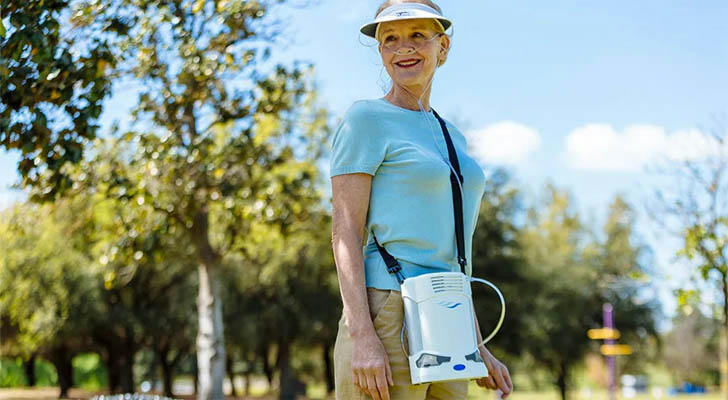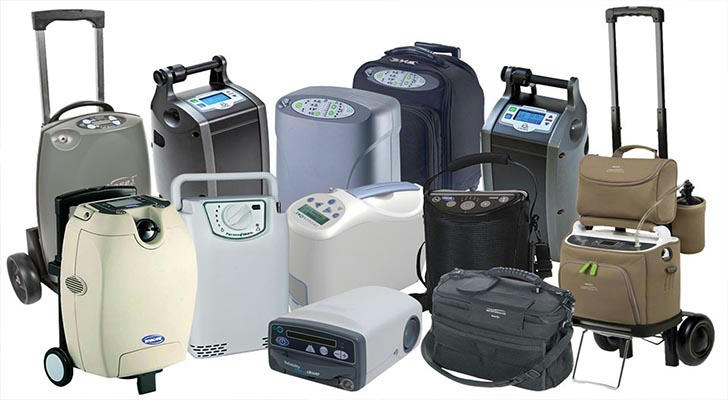How Can Patients Get Free or Low-Cost Portable Oxygen Concentrators
Portable oxygen concentrators (POCs) are essential medical devices that provide life-enhancing support for patients with respiratory conditions like COPD. However, the cost of these devices can be a concern for many patients. This article explores the options available for obtaining a POC, covering ownership after five years, insurance coverage, and ways to get free or low-cost units.

1. Will I Still Own My Oxygen Concentrator After 5 Years?
The answer depends largely on whether the oxygen concentrator was rented or purchased. In the U.S., most oxygen concentrators provided through Medicare are rented rather than purchased. Under Medicare Part B, oxygen equipment is classified as Durable Medical Equipment (DME), and most patients enter a 36-month rental agreement, where Medicare and supplementary insurance help cover the costs.
After 36 months of rental, the equipment provider is required to continue servicing and maintaining the concentrator for an additional 24 months (for a total of five years). However, at the end of the five-year period, patients do not automatically gain ownership of the machine. Instead, a new rental contract may begin, or you may have the option to negotiate a purchase or continue the rental agreement, depending on the equipment provider’s policy.
2. Will Insurance or Medicaid Cover the Cost of an Oxygen Concentrator?
Insurance and Medicaid may help cover the cost of portable oxygen concentrators, but coverage depends on individual circumstances, policies, and medical conditions. Here’s a breakdown:
Medicare: To qualify for coverage through Medicare Part B, patients must meet specific medical criteria, such as low oxygen levels confirmed through a doctor’s diagnosis. If the requirements are met, Medicare covers oxygen therapy equipment, including concentrators, but only through rental. Medicare typically pays 80% of the equipment’s cost, with patients covering the remaining 20%.
Private Insurance: Many private insurers offer some coverage for portable oxygen concentrators, but policies and extent of coverage can vary. Some may cover the full cost, while others offer partial reimbursement. Patients are encouraged to consult directly with their insurance provider to confirm details.
Medicaid: Medicaid provides assistance to low-income individuals, and in many states, it may cover the cost of portable oxygen concentrators. However, eligibility and coverage specifics vary between states, so it’s essential to consult with your state’s Medicaid office for detailed information.

3. How to Get Free or Low-Cost Portable Oxygen Concentrators
If insurance or Medicaid does not fully cover the cost of an oxygen concentrator, there are several other ways to access a free or low-cost device:
Nonprofit Organizations and Charities: Various charitable organizations, such as Oxygen for Life and the American Lung Association, help provide free or subsidized portable oxygen concentrators to patients in need. These programs often require proof of income and medical necessity. Patients can apply for assistance by submitting documentation that verifies their financial situation and medical condition.
Government Aid Programs: Some state and local government programs offer aid for healthcare-related costs, including the cost of oxygen concentrators. These programs are typically geared towards low-income households. Check with local health departments for eligibility criteria.
Used and Discounted Equipment: Purchasing a second-hand portable oxygen concentrator can be a more affordable option. Websites like Craigslist, eBay, and local medical supply stores often sell used or refurbished units at a lower cost. It’s essential to ensure the equipment is in good working condition and that proper maintenance has been performed.
Medical Equipment Donation Programs: Several organizations accept and distribute donated medical equipment, including oxygen concentrators. Programs such as Medicare Supplement recycle equipment and provide it to low-income individuals at little to no cost. Contact these programs to see if you qualify.
4. Eligibility for Free Trials
Some manufacturers and medical supply companies offer free trials of portable oxygen concentrators to ensure that the device meets the patient’s needs before committing to a purchase or rental agreement. Free trials usually last between a few days to a few weeks, allowing patients to test the device in various settings.
The eligibility criteria for free trials often include:
Medical Need: A physician’s prescription or recommendation is required to demonstrate that the patient genuinely needs oxygen therapy.
Financial Verification: Some programs may ask for proof of financial need to ensure that the patient is not able to afford the device otherwise.
Case Study: How Nonprofit Aid Helped Mr. Johnson
Mr. Johnson, a 65-year-old man with COPD, struggled to afford a portable oxygen concentrator after his Medicare plan covered only part of the costs. Living on a fixed income, Mr. Johnson couldn’t handle the out-of-pocket expenses. Upon researching, his doctor recommended reaching out to the American Lung Association and Oxygen for Life, two nonprofit organizations that assist low-income patients with respiratory conditions.
Mr. Johnson applied for aid, submitting his medical documentation and proof of income. After a few weeks, he was approved for a free portable oxygen concentrator through the nonprofit program. Now, Mr. Johnson can live a more active life without worrying about oxygen shortages or financial stress.
Conclusion
Portable oxygen concentrators are crucial for patients with respiratory issues, but obtaining them can be a financial burden. Fortunately, there are several options for getting free or low-cost units, including nonprofit aid, insurance coverage, and government assistance. Patients are encouraged to explore all available options, including free trials and used equipment, to find the solution that best fits their needs. By connecting with the right resources, you can improve your quality of life and ensure access to the care you deserve.
